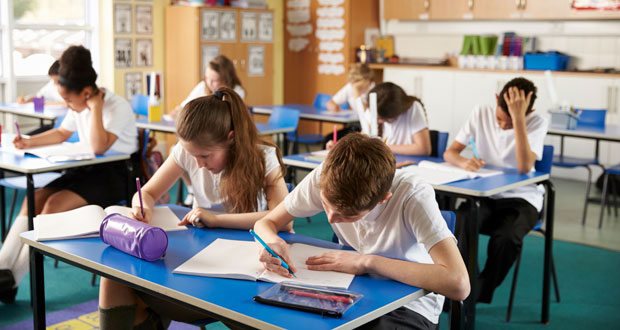A new National Audit Office report on the condition of school buildings has revealed around 700,000 children in England are studying in schools requiring major rebuilding or refurbishment, but even more concerning is that the possibility of a building collapse or failure causing death or injury has been a “critical and very likely” risk since summer 2021.
The UK’s independent public spending watchdog’s report found that more than a third (24,000) of English school buildings are past their estimated initial design life. These buildings can normally continue to be used, but are generally more expensive to maintain and, on average, have poorer energy efficiency leading to higher running costs.
In recent years, there has been a significant funding shortfall contributing to deterioration across the school estate. The Department for Education (DfE) has reported £7 billion a year as the best practice level of capital funding to maintain, repair and rebuild the school estate.
In 2020, it recommended funding of £5.3 billion a year to maintain schools and mitigate the most serious risks of building failure, but was subsequently only allocated an average £3.1 billion a year of relevant funding from HM Treasury. This includes funding to rebuild 500 schools over a 10-year programme, on which DfE is making “slower than initially expected progress” awarding contracts.
Between 2016 and 2022, DfE spent an average £2.3 billion a year.
Steve McGregor, Group Managing Director at DMA Group, a property maintenance specialist which works across the education space. commented: “We’ve increasingly encountered some management teams in the education space looking to source cheaper parts themselves off the internet. It’s an understandable tactic, because parts can often appear less expensive online, but that’s not the whole story. If the wrong parts turn up, or they’re late, or faulty, it causes delays and further costs.
“The senior leadership teams across schools have shouldered immense, yet routine pressures in trying to reconcile the financial and operational challenges of delivering education in a cost-down environment. Compounded by the unprecedented cost-of-living and energy cost crisis these establishments are scrambling by cutting costs wherever possible, to the detriment of their buildings. Now it’s catching up. Purchasing lesser standard of parts will save money initially, but the increases in running, maintenance and replacement costs over the longer term will be a false economy. Buying the wrong or lesser quality kit will cost more, or even worse damage a premises, risk the health and wellness of its occupants, not to mention the reliability of the building.”
The report also says DfE has assessed the possibility of a building collapse or failure causing death or injury as a “critical and very likely” risk since summer 2021. The report highlighted ongoing concerns with the use of reinforced autoclaved aerated concrete (RAAC) – a lightweight form of concrete prone to failure, used between the 1950s and mid-1990s. DfE has been considering the potential risk posed by RAAC since late 2018, following a school roof collapse and whilst it continues to “build its understanding” of where RAAC is used, including by collating questionnaire responses from schools, it says it “does not currently have the information required to fully manage potential risks”.
At May 2023, 6,300 (42 per cent) of the schools on which DfE has chosen to focus had completed work to establish if it was present. At that point, through questionnaire responses and wider work, DfE identified RAAC may be present in 572 schools. DfE has allocated £6 million for specialists to investigate 600 schools potentially affected by RAAC. By May 2023, 196 investigations had been conducted, with RAAC confirmed in 65 schools.
More positively, the report found that DfE had collected better evidence on the condition of the whole estate. This included identifying 13,800 system-built blocks – almost all containing asbestos. However, of these around 3,600 may be more susceptible to deterioration. In September 2022, DfE approved plans for a structural assessment of 200 system-built blocks to help better understand the risks – but none had been conducted as this report went to publication.
Gareth Davies, Head of the NAO commented: “At present, 700,000 pupils are learning in schools requiring major rebuilding or refurbishment. DfE has, since 2021, assessed the risk of school building failure or collapse as critical and very likely, but it has not been able to reduce this risk. More widely, it has an ambitious strategy for decarbonising the education estate but no plan for how it will achieve this or how much it is likely to cost.
“DfE is gathering some of the data it needs to effectively target its resources. It must now use this to improve its understanding of where schools are most at risk so it can balance addressing the most urgent risks while investing enough in maintenance, reducing carbon emissions, and climate change adaptation measures to achieve its objectives and secure longer-term value for money.”





